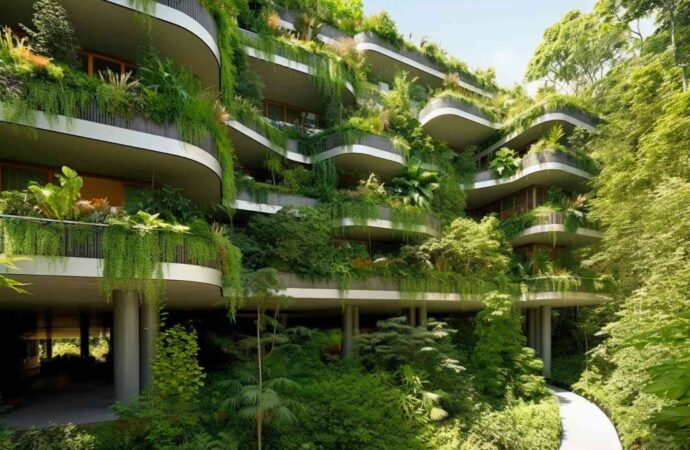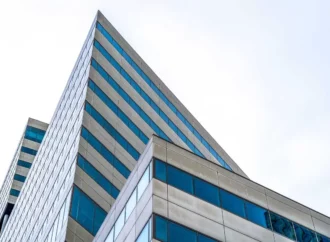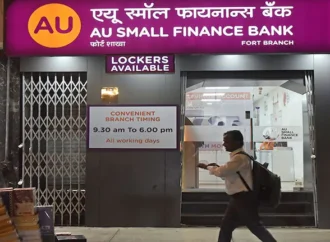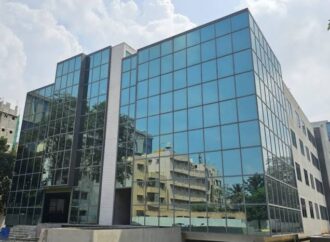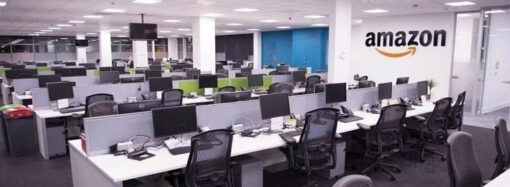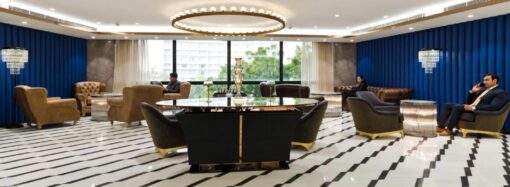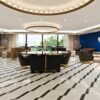Explore the rise of green buildings in the real estate sector, highlighting their environmental, economic, and social benefits. Check out critical parameters like energy efficiency, water conservation, and sustainable materials while examining technological innovations and green building certifications. Case studies and future trends showcase the promise of green buildings in fostering sustainability and resilience in the built environment.
As environmental concerns continue to rise, the real estate sector is undergoing significant transformation. Green buildings are specifically designed to minimise environmental impact and promote environmental conservation. Green buildings can reduce energy consumption by up to 50% and carbon emissions by up to 30%, according to the World Green Building Council. Qdesq.com, as a leader in the real estate market, is committed to promoting sustainability by actively encouraging green building initiatives. This guide will provide you with a comprehensive overview of green buildings, including their benefits, essential parameters, technological innovations, and future trends from the perspective of qdesq.com.
Defining Green Buildings
Green buildings are constructed, designed, and operated to improve environmental performance. They use sustainable materials, resource efficiency, and innovative technology to minimise their ecological footprint. Green buildings’ main benefits include reduced energy consumption, less water usage, and improved indoor environmental quality, ultimately leading to low waste production.
- Benefits of Green Buildings:
Environmental: Reduced carbon footprint, conservation of natural resources, and enhanced biodiversity. Green buildings can lead to a 35% reduction in CO2 emissions and 20-30% savings in water usage.
Economic: Lower operation costs, raising property value, and potential tax incentives. Green buildings can reduce operating costs by 8-9% and increase building value by 7.5%.
Social: Enhanced health of occupants, greater productivity, and a better quality of life. A study by the Harvard T.H. Chan School of Public Health found that employees in green, well-ventilated offices had a 101% increase in cognitive scores.
Critical Parameters of Green Buildings
The critical parameters of green buildings are vital, and they go a long way toward effectively implementing them. These critical parameters ensure that buildings are constructed that are friendly to the environment yet economically viable and socially beneficial.
- Energy Efficiency
Ensures that energy is minimised. Renewable energy sources involve incorporating solar panels and wind turbines, among other systems, to reduce dependency on fossil fuels.
Energy-saving Technologies: These may include energy-efficient lighting, HVAC, and heating or cooling systems, as well as intelligent energy management systems. Buildings that integrate these technologies can reduce energy use by 24-50%.
- Water Conservation
Efficient Water Management: Low-flow fixture installations, rainwater harvesting systems, and greywater recycling to minimise water usage. Buildings with these systems can reduce water usage by up to 50%.
Landscape Design: Low-water consumption designs through drought-tolerant flora and adequately designed irrigation systems.
- Sustainable Materials
Eco-friendly Materials: Reduce the building’s environmental impact by using recycled, reclaimed, and locally sourced materials. These materials can lower building energy consumption by 13-17%.
Durability of material: Long-lasting materials minimise the need for many replacements and repairs.
- Indoor Environmental Quality
Air Quality and Ventilation: Advanced ventilation and non-toxic materials are used to attain good indoor air quality.
Natural Lighting and Thermal Comfort: Design strategies with maximum natural light exposure and thermal comfort through proper insulation and shading.
- Waste Reduction
Through construction practices involving minimal waste production, including modular and prefabricated construction.
Recycling and Composting: Development of on-site recycling and composting programs with effective waste management means.
Green Building Certifications and Standards
Certifications and standards are essential to promote and actualise green building practices. They provide a framework for appraising buildings about environmental performance and encourage improvement.
LEED: It is recognised internationally, and it grades the building according to efficiency in energy, water, materials, and indoor environmental quality.
BREEAM: (Building Research Establishment Environmental Assessment Method): A more holistic assessment method for evaluating the sustainability performance of buildings across categories.
WELL Building Standard: This standard looks at the occupants’ health and well-being regarding factors like air quality, water quality, and comfort.
GRIHA: (Green Rating for Integrated Habitat Assessment): Indian green building rating emphasising resource efficiency and sustainable building.
Technological Innovations in Green Buildings
Technological advancements are driving the evolution of green buildings by making them more efficient, sustainable, and intelligent.
- Smart Building Technologies
Internet of Things (IoT): Monitoring and controlling building systems with IoT devices to enhance energy efficiency and occupant comfort.
Building Information Modeling (BIM): The use of BIM for planning, designing, and managing building projects to optimise resource use and minimise waste.
Advanced Building Automation Systems
Energy Management Systems: These automated systems monitor and control energy use to improve performance and reduce operation costs.
Climate Control Systems: Advanced HVAC systems that adapt to changing weather conditions and occupant preferences, ensuring optimal thermal comfort.
Case Studies and Examples
Real-world examples of green building projects demonstrate sustainable practices’ tangible benefits and feasibility.
Some of the booming green building projects include:
The Edge, Amsterdam: This is said to be the greenest and, simultaneously, the most innovative building ever built in the world. It has energy system infrastructures, renewable energy sources, and intelligent building technologies.
One Central Park, Sydney: This residential complex uses vertical gardens, a centralised thermal plant, and a water recycling system, which are examples of innovative green building practices.
Suzlon One Earth, Pune: A LEED Platinum-certified corporate campus incorporating renewable energy, water conservation, and sustainable materials.
Challenges and Opportunities
While green buildings offer multiple advantages, some challenges need to be overcome to promote the widespread adoption of green buildings.
- Barriers
High Initial Costs: The initial cost of green building technologies and materials can be higher, which generally constitutes a barrier to developers and investors. However, a World Green Building Council study shows that the return on investment for green buildings can be as high as 19%.
Awareness Deficit: Lack of sufficient awareness and knowledge about the benefits of green buildings among stakeholders may limit its adoption.
- Opportunities
Economic Incentive: The government can provide economic incentives, such as tax rebates and subsidies, that may offset higher initial investment costs and encourage green building practices.
Market Demand: Increasing demands for sustainability and energy-efficient buildings can drag the market toward greener building adaptation.
Green Buildings Emerging Trends
As the dynamic changes within the real estate market continue, several emerging trends shape the future of green buildings.
Sustainable Urban Planning: Incorporate green building practices with urban planning towards sustainable and resilient cities.
Net-Zero Buildings: Net-zero energy buildings can be achieved by producing as much energy as they consume. The International Energy Agency says 50% of new buildings should be net-zero by 2040 to meet climate goals.
Biophilic Design: The essence of including natural elements in building design to enhance the relationship between occupants and nature will enrich well-being and productivity.
Conclusion
Green Buildings are future real estate; these have a lot of environmental, economic, and social benefits. Qdesq.com is driven and committed to pushing through this agenda to create sustainable green building practices for the whole real estate sector. Embrace energy efficiency, water conservation, sustainable material use, and technological innovations in the built environment for sustainability and resilience. Moving into the future, great strides need to be made, and the collaboration among stakeholders such as developers, investors, and policymakers is critical for us to fully realise the promise of green buildings in responding to the global environmental challenge that lies before us all.

